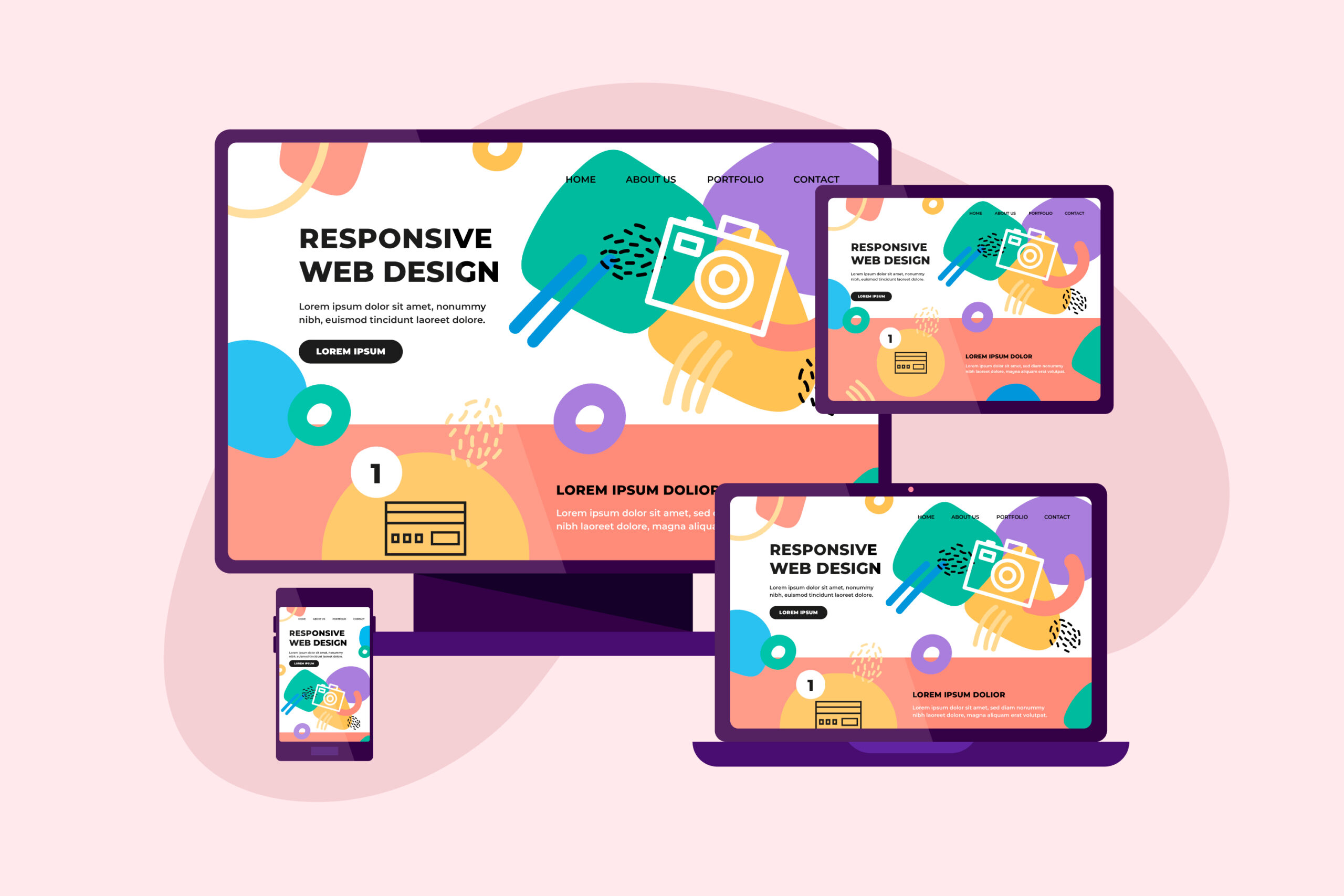Unveiling the Secrets of Ghosted Domains
Explore the intriguing world of expired domains and online opportunities.
Responsive Web Design: Where Flexibility Meets Creativity
Discover how responsive web design blends flexibility and creativity to elevate your website's user experience and boost engagement!
The Principles of Responsive Web Design: A Comprehensive Guide
Responsive web design is a crucial approach that ensures your website functions seamlessly across a multitude of devices, from smartphones to desktops. The principles of responsive design revolve around fluid grids, flexible images, and CSS media queries. A fluid grid layout allows design elements to resize in proportion to the screen size while maintaining the visual hierarchy. For instance, using percentage-based widths instead of fixed pixel dimensions allows your layout to adapt easily. Additionally, flexible images scale correctly within their containing elements, preventing overflow and ensuring optimal viewing experiences.
Implementing CSS media queries is fundamental in achieving a responsive web design. Media queries enable developers to apply different style rules based on characteristics of the device, such as its width, height, and resolution. This means you can create a tailored experience for users on various devices. To summarize, consider these essential principles of responsive web design:
- Utilize fluid grid layouts
- Incorporate flexible images
- Apply CSS media queries
By adhering to these principles, you can enhance user experience and improve your website's SEO performance, ultimately reaching a broader audience effectively.

Top 10 Benefits of Embracing Responsive Web Design
In today's digital landscape, responsive web design is more crucial than ever. By embracing this design approach, businesses ensure that their websites adapt seamlessly to various screen sizes and devices, leading to enhanced user experience. Here are the top 10 benefits:
- Improved User Experience: Websites that adjust to any device provide a smoother browsing experience.
- Cost-Effectiveness: Maintaining a single responsive website reduces development and maintenance costs.
- Enhanced SEO Performance: Search engines favor responsive designs, which can lead to higher rankings.
- Increased Mobile Traffic: With more users accessing the web through mobile devices, responsive design captures a larger audience.
- Faster Load Times: Well-optimized responsive sites tend to load faster, improving visitor retention.
Moreover, adopting responsive web design helps businesses to stay ahead in a competitive market. It can significantly improve conversion rates and customer satisfaction. Additional benefits include:
- Easier Analytics & Tracking: Single responsive websites consolidate data collection.
- Future-Proofing: Responsive designs are adaptable to emerging devices.
- Consistent Branding: A unified experience across devices strengthens brand identity.
- Lower Bounce Rates: Improved usability decreases the likelihood of users leaving the site prematurely.
- Better Social Media Integration: Responsive designs enhance sharing across platforms.
How to Create Stunning Responsive Websites: Tips and Best Practices
Creating stunning responsive websites involves a blend of design principles, technical skills, and a keen understanding of user behavior. To start, ensure that your website layout is fluid and adaptable across various devices. Utilize media queries to apply different styles for different screen sizes. This ensures that your site looks great on desktops, tablets, and smartphones. Additionally, consider implementing a mobile-first approach by designing your website for mobile devices before scaling up for larger screens. This practice helps prioritize critical content in smaller viewports and enhances user experience.
Another essential aspect is the optimization of images and content to maintain fast loading times on all devices. Use responsive images that adjust based on screen resolution, and compress files where possible. Leverage CSS Flexbox or Grid layouts for a more organized and adaptable structure. Finally, remember to test your website on various devices and browsers to ensure consistency in functionality and appearance. By following these best practices, you can create a visually appealing and fully responsive website that will engage users effectively.